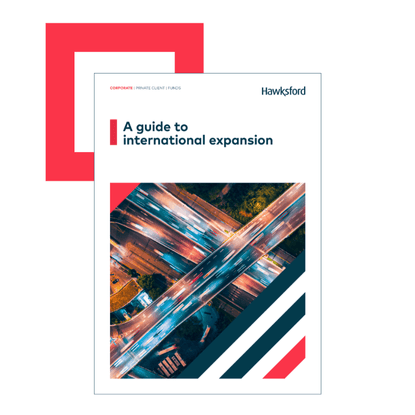The ASEAN region’s cultural richness and economic dynamism have made it a compelling destination for business expansion and investment. While some global markets have faced challenges in regaining momentum post-pandemic, ASEAN has distinguished itself by attracting strong foreign direct investment (FDI) and demonstrating robust economic performance.
Sustained growth and strong fundamentals
In 2023, ASEAN captured 17% of global FDI, totaling US$220 billion (ASEAN Investment Report 2024). The Asian Development Bank projects the region’s economy will grow by 4.7% in 2025, significantly outpacing the IMF’s global growth forecast of 3.2%. Evidently, growth rates will vary widely across ASEAN’s diverse member states, with some among the most attractive and dynamic in the world.
Increased regional integration, extensive labour and consumer markets, and a favourable business climate are undoubtedly key drivers of growth. Malaysia, as the current ASEAN chair for 2025 under the theme of ˜inclusivity and sustainability”, is continuing to make efforts to enhance the business environment by addressing critical issues such as renewable energy, healthcare, and geopolitical stability.
Opportunities across key sectors
Understanding which markets and industries are thriving can help create a clearer picture of where the potential lies. US-led foreign investment into the region in 2023 accounted for more than 30% of total investment (ASEAN Statistical Brief, June 2024). The EU, China, Hong Kong, and Japan have also maintained strong investment positions, with diverse interests across sectors including financial services, manufacturing, real estate, and retail.
While FDI flows from the US and EU were primarily centred on financial and insurance sectors, Chinese investors were more focused on manufacturing, wholesale, retail and real estate opportunities. This shouldn’t come as a surprise given the region’s focus on innovation and sustainability and the boom in its middle-class income consumer population.
For instance, HSBC has reported that the electronics sector is one of the largest recipients of FDI in the region, with international technology companies choosing to establish manufacturing plants, research and development hubs and data centres, attracted by the pace of innovation and cost efficiencies.
The UK also continues to strengthen its trade ties with ASEAN. Total trade in goods and services between the UK and ASEAN Member States stood at £47.2 billion at the end of 2023, with UK exports to the region up by 5% year on year. The UK’s recent accession to the Comprehensive and Progressive Agreement for Trans-Pacific Partnership (CPTPP) – whose membership in ASEAN includes Brunei, Malaysia, Singapore and Vietnam – looks set to boost these UK-ASEAN ties further.
Meanwhile, the region’s heavy energy consumption – the fourth largest after China, the US and India – has led to increased investment in sustainability from overseas. For example, in Indonesia, the country’s massive nickel reserves are proving vital to electric vehicle manufacturing and have further cemented its role in global supply chains.
And, with 70% of the ASEAN population set to be considered middle-class by 2030, the consumer market, including products, healthcare, leisure, e-commerce and digital financial services is anticipated to increase in demand to the tune of US$4 trillion.
Businesses wishing to diversify their supply chain are also looking to ASEAN manufacturing – especially where cutting-edge capabilities have been employed. In particular, Singapore has proved a compelling and cost-efficient option, combining manufacturing expertise with international sales proficiency.
Navigating regional complexities
Despite its attractiveness, ASEAN’s regulatory, legal, and compliance landscape varies widely across its diverse member countries. Businesses must be cognisant of this and approach each market carefully, paying particular attention to taxation, free trade agreements, investment treaties, incentives, employment laws and compliance requirements in equal measure.
It is also important to recognise that dynamic markets – by definition – are rarely static. Rules evolve and new trade agreements are passed. The evolving regulatory environment, shifting trade policies, and geopolitical developments add further complexity. The recent US administration’s tariff strategy, which could fuel further trade tensions, highlights the need for agility and informed decision-making.
Maximising the probability of success
Businesses and investors entering the ASEAN region need to be very clear on their objectives and have a strategy for navigating regional complexities and cultural nuances. Working with experienced advisors is crucial and can provide a competitive advantage.
Selecting a local partner or service provider with deep regional knowledge and international experience can make a vital difference in the speed and success of market entry.
Hawksford, for example, recently supported Italian stationary manufacturer Moleskine – a client of over 20 years – on its expansion into the ASEAN region. Understanding domestic market dynamics was crucial, with the Hawksford team providing regional expertise to open five companies and around 20 additional stores across the ASEAN and broader Asia region.
Hawksford combines deep-rooted regional knowledge with a commercial outlook and an established presence in Asia. We provide corporate, private client and fund support services to a diverse range of international clients and we are here to help you achieve your ambitions in the ASEAN region.
For more information on the ASEAN’s opportunities, and to learn how Hawksford can support you in the region, visit our ASEAN market focus page.

Explore ASEAN opportunities with tailored market entry support
Partner with us to expand confidently into the ASEAN market.
Updated on



